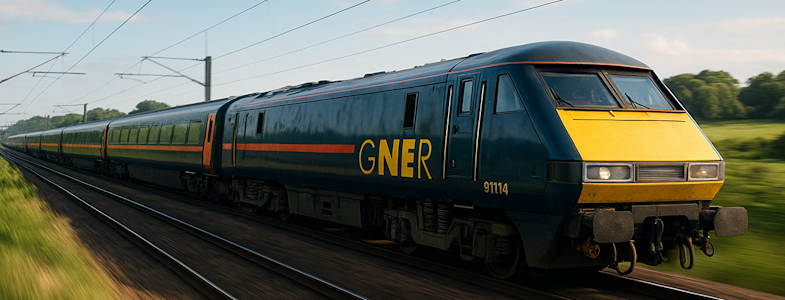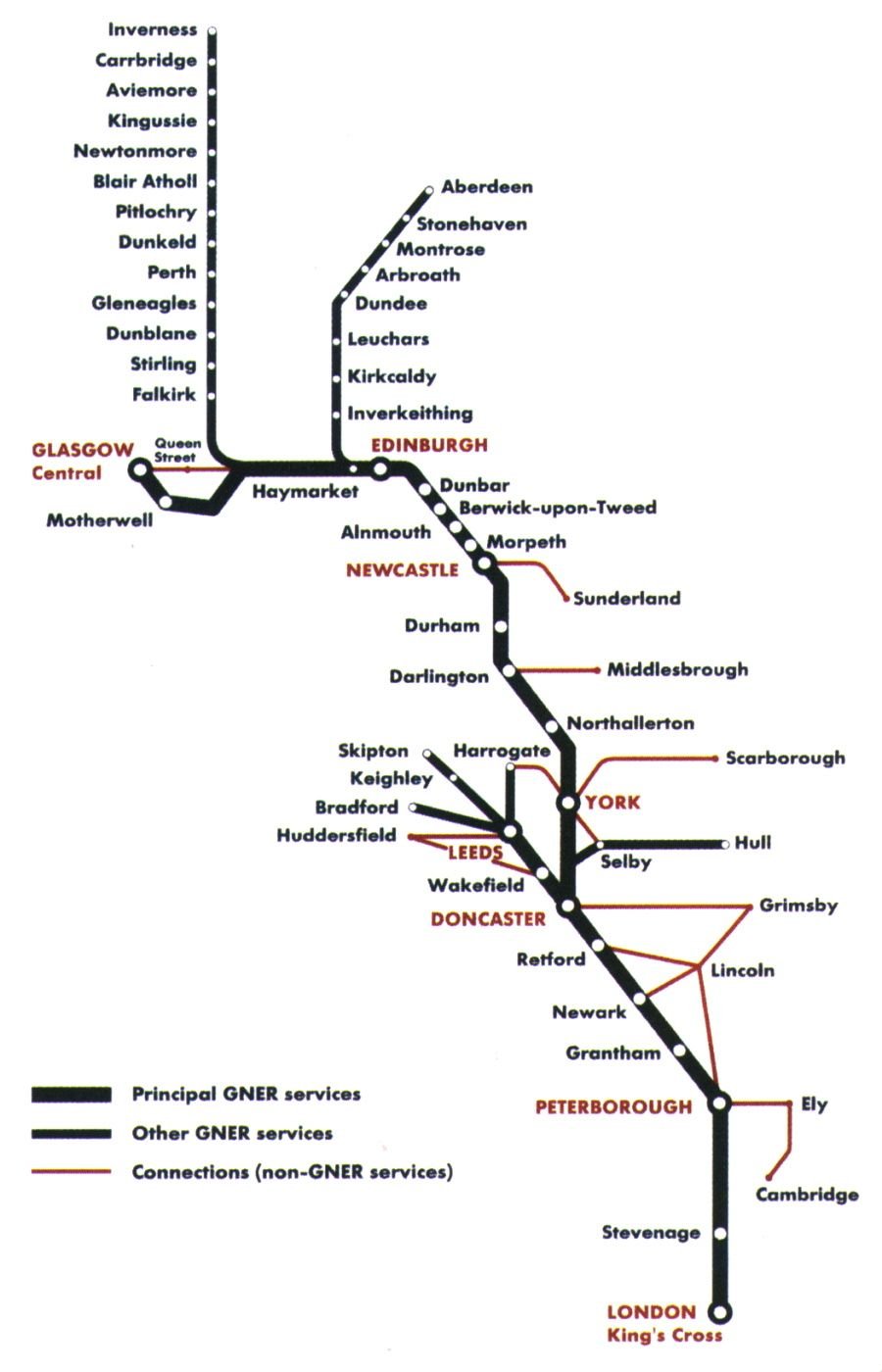
Overview
Great North Eastern Railway (GNER) was a UK train operating company that ran long-distance services on the East Coast Main Line between 1996 and 2007. Owned by Sea Containers, GNER became well known for its distinctive white livery with purple, red, and grey branding, offering intercity services linking London King’s Cross with key destinations in Yorkshire, the North East, and Scotland. Its brand identity and service style gave it a strong reputation as one of the flagship operators of Britain’s privatised railways.
History
GNER began operations on 28 April 1996, taking over the East Coast franchise from British Rail InterCity. The company invested heavily in improving the passenger experience, introducing refurbished interiors, restaurant-standard onboard dining, and a strong focus on customer service. Despite its popularity, financial difficulties for its parent company Sea Containers, combined with the cost of its ambitious franchise commitments, led to GNER losing the franchise in 2007. Services were then transferred to National Express East Coast.
Network & Routes
Operating on the East Coast Main Line, GNER connected London King’s Cross with a wide range of major cities. Key routes included London to Leeds, Newcastle, Edinburgh, and Glasgow, with extensions to Aberdeen and Inverness. The franchise was best known for its express services to Yorkshire and Scotland, offering a fast and direct alternative to air travel. GNER’s London–Edinburgh route was one of its flagship operations, with services running in around four and a half hours.
Fleet & Onboard Facilities
GNER operated a fleet of InterCity 225 (Class 91 locomotives with Mark 4 coaches) and InterCity 125 (HST) trains. Interiors were refurbished with features such as First Class lounges, quiet coaches, and full dining options, which set a benchmark for premium intercity travel. The operator promoted a strong focus on passenger comfort, with catering that became well regarded, especially in First Class. The white and purple livery with red and grey accents made GNER’s fleet instantly recognisable.
Travel Information
Passengers travelling with GNER could choose from a range of ticket types, including Advance, Off-Peak, and Standard Anytime fares. First Class travel was particularly popular, with larger seating, complimentary meals, and a higher level of service. The company also offered a “GNER Business Saver” aimed at professionals travelling frequently between London and major cities such as Leeds and Edinburgh.
Performance & Reputation
GNER was widely praised for its high-quality customer service and onboard experience, becoming one of the most respected brands of the privatised rail era. However, rising franchise payments and parent company financial instability undermined its long-term sustainability. Although the franchise ended in 2007, GNER remains fondly remembered for its distinctive style, strong service ethos, and contribution to reshaping the image of Britain’s intercity railways.
Did You Know?
GNER’s InterCity 225 trains could reach speeds of up to 125 mph on the East Coast Main Line.
The company was the first to introduce full silver service dining on long-distance trains after privatisation.
Its striking blue livery with red and gold accents became one of the most iconic designs of Britain’s modern rail era.
GNER Archived Timetables
All files listed below are in compressed format and will need to be unpacked with an archiving program, we recommend 7-Zip which is completely free and can be downloaded from here.
GNER Route Map
Related Searches
GNER Loyalty Scheme
GNERtime was a loyalty programme that offered extra benefits and services to regular travellers. There were....
GNEr First Class
GNER offered a very highly regarded First Class service with at seat refreshments and newspapers. Passengers...
GNER Food & Drink
GNER offered a full service restaurant car which allowed passengers to dine in style with silver service. This was...
GNER Delay Repay
GNER operated services before the official delay repay scheme was introduced. There were other mechanisms...
GNER Eurostar
For a period of time GNER operated a number of 'North of London' regional Class 373 sets on services between...
GNER White Rose
For a period of time GNER operated a number of 'North of London' regional Class 373 sets on services between...



